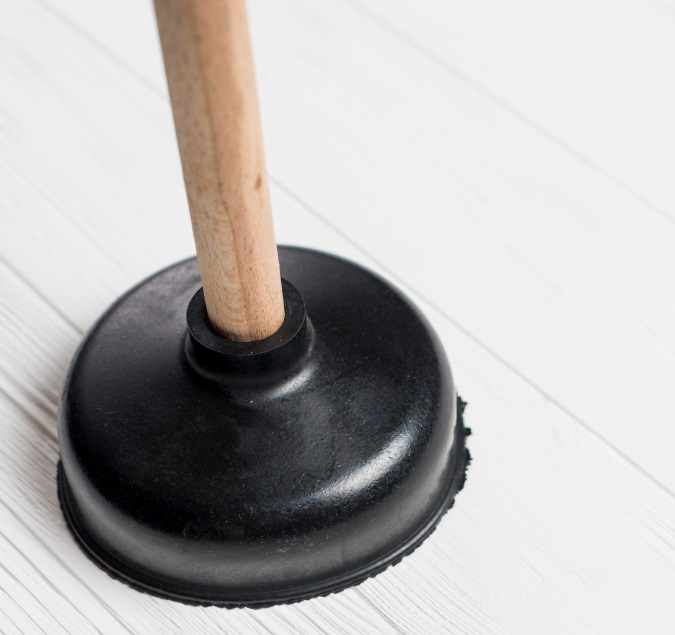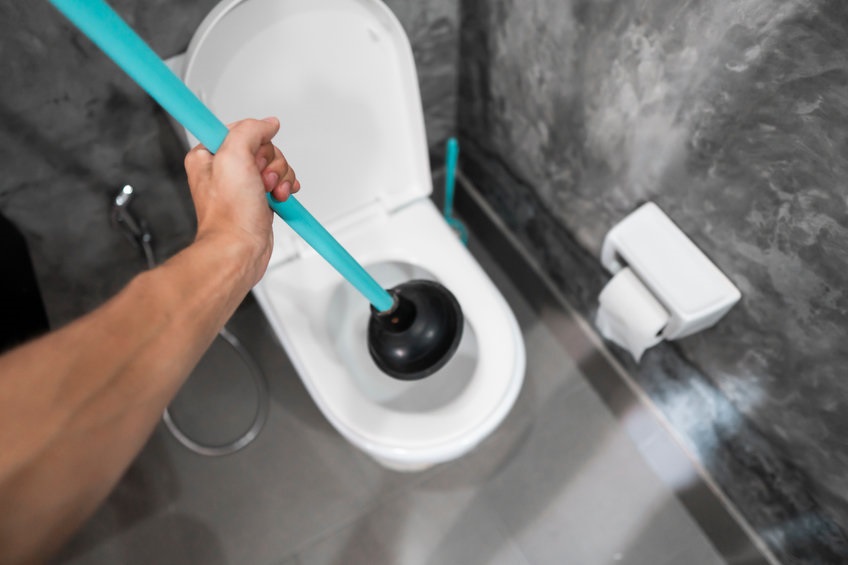Unblocking
Toilets, Sinks & Showers
Plumbers’ Tips from FlowFix Plumbing
To make a messy job easier, we have come up with a handy guide on how to use a plunger.
Nearly every household has at least one plunger; when a clog occurs in sinks, tubs, toilets and in the bathroom, they’re pretty handy.
When used correctly, nine times out of 10, a plunger can unclog pipes and have them run more efficiently with just a couple of thrusts, saving you from having to call our plumbers.
How does a plunger work?
When the plunger is pressed down, it forces air into the drain and increases pressure. Water makes a seal around it for optimal suction. Pulling back on the plunger creates a vacuum, forcing anything clogging the pipe upwards and out.
But to make a messy job easier, it’s important to have the right kind of plunger and use the right technique. We have come up with a useful guide to help you learn how to use a plunger properly.
What is a plunger?
Not all are created equal; some are better suited for sinks, basins and showers, while others are more appropriate for toilets. We think it’s a good idea to keep one of each type on hand and to know what each one is good for before your next plumbing emergency strikes.
The two most common types are the cup plunger and the flange.
Cup plunger: A simple wooden handle attached to a rubber cup, this model is most effective on flat-surface drains, like those in the sink, tub, basin and bath. However, it can’t create a sufficiently airtight seal in the curve of a toilet drain to produce adequate suction.
Flange plunger: Toilet blockages call for the flange model. This has an extra ring of rubber or flange around the cup. When in the toilet drain, the flange seals in the air, increasing the suction power.
Once you’ve got the best tool for the job, it is all about technique.


Using a plunger in your toilet
If your toilet looks like it’s about to overflow due to a clog, don’t keep pressing the handle in the hope that the bowl will magically drain.
Step 1: Wait at least ten minutes, then turn off the water to your toilet (located on the wall behind the toilet).
Step 2: For your plunging efforts to be effective, the water level must be halfway up the brim so it can completely cover the cup. If the water in the toilet is still close to overflowing, take some of it out. If the water level is too low, add a little more.
Step 3: As you put your plunger into the toilet, the cup should be covered with water and the rubber ring of the flange should be inserted into the drain opening in the bowl to create suction.
Step 4: Put even pressure, pushing and pulling vertically for about 20 seconds without lifting the plunger out of the drain and breaking the seal.
Contrary to what you may have heard, repeatedly flushing while frantically pumping won’t release the blockage any faster. It will only break the plunger’s seal and ruin the suction.
Unclogging a tub, sink, or shower
It’s easy to use a plunger on a bathtub, sink, or shower.
Step 1: Plug the overflow drain, if there is one, with a wet cloth. Doing so creates stronger suction by preventing air from escaping. To increase the plunger’s suction power, you can create a tighter seal by lining the rim of the cup with a bit of Vaseline petroleum jelly.
Step 2: Place the rubber bell securely over the sink and push down on the handle – gently at first – to create a tight seal. Then, using firm pressure, thrust for about 20 seconds without lifting the plunger enough to break the seal. When you pull the plunger away, the clog should be cleared.
One important point
If you decide to use a chemical for unclogging drains, which we do not recommend, then don’t use a plunger. A plunger could splash the dangerous chemicals around the place and potentially burn you.
What to do when plungers fail
If you still can’t get your sink and toilet unclogged using the above techniques, then it’s time to call a pro. The clog may simply be too far down or severe for you to handle alone, and it’s better to call in our plumber than to accidentally damage your pipes or fixtures.
Plungers don’t fix every plumbing issue
Using a plunger is a great first step to take for fixing clogged toilets and sinks. They take patience and the right technique but give them a go before getting in the pros by calling 027 265 4949.
